New York City, June 20, 2017

★★★ The wind shook leftover raindrops out of the thick foliage. The schoolyard was crunchy underfoot with freshly torn twigs and leaves. The sky was a blue three or four months out of season; the light was sharp and hazeless. The flare off a windshield came close behind the flare off a bald head. Around solar noon it was unthinkable to stand and wait where the line for food extended past the shade of the restaurant onto the unprotected sidewalk. Once the shadows were falling sideways again, though, there was no place better to be than out in the breeze-filled afternoon shade. Each cloud that came into view seemed even better than the last one.
Now I Am Become Mall, Destroyer Of Cities
(And now all the malls are food halls.)
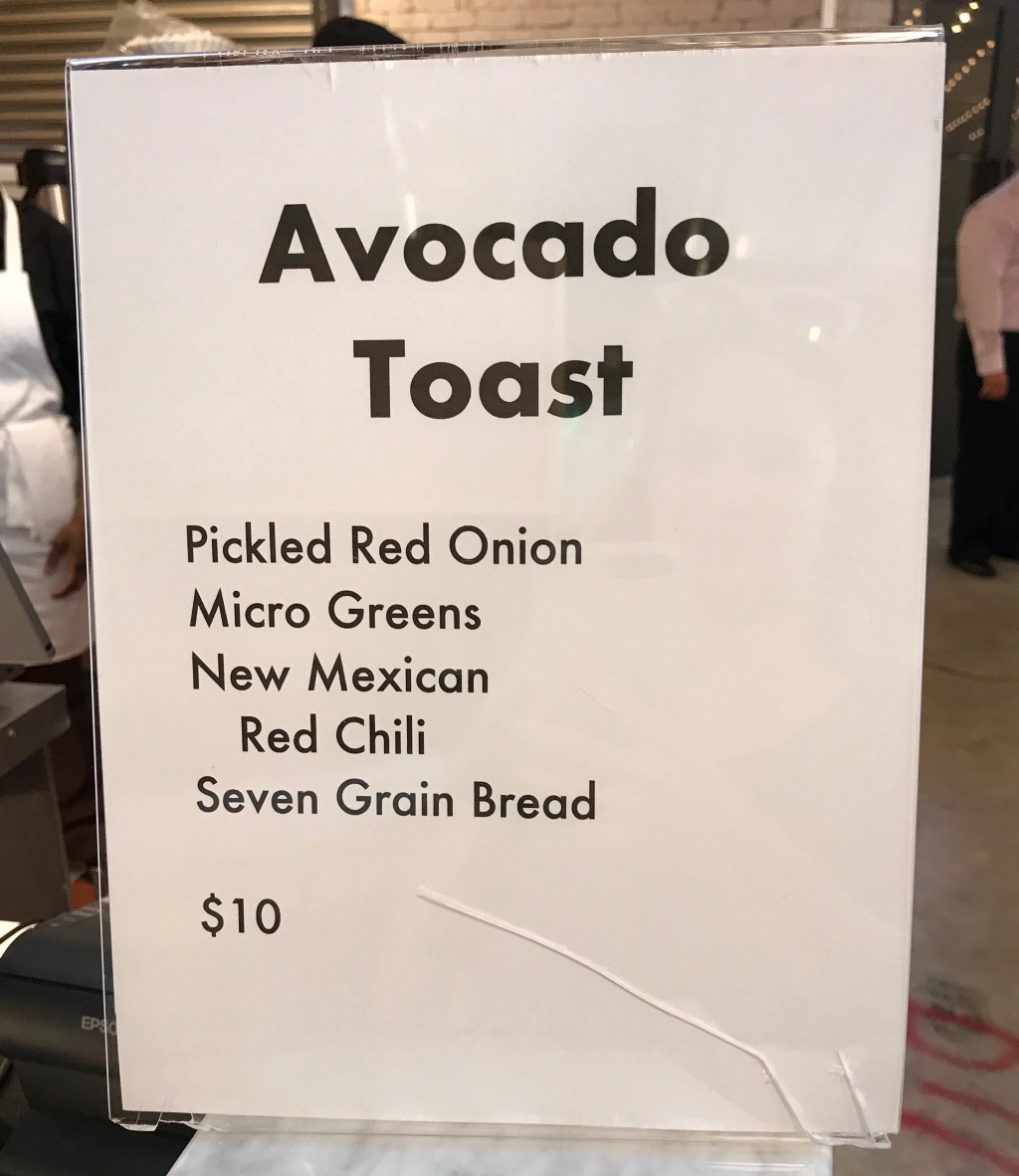
Greenwich Village was once a world apart, where anything was possible. now it’s an upscale suburban shopping mall because the so-called Heartland is spreading like a cancer into the heart of this city, making it a less comfortable place for “weirdos” to exist.
this makes me angry and sad beyond words.
—Jeremiah Moss, Vanishing New York
I just went to lunch with my co-workers at the newly opened DeKalb Market Hall in the part of Downtown Brooklyn I affectionately like to refer to as “DumBro,” and collectively, we spent nearly a hundred dollars on pop-up food trends like poke bowls, pierogis, single-origin coffees, and South American maize patties.
As we were leaving, I spotted a sign for ten-dollar avocado toast. I kept re-reading the list of ingredients, wondering how the price tag made sense, even if an entire $2.50 Hass was used, and even if the worker who prepared it were being paid a living wage. There was no protein at all. What could justify the price? Were the micro greens grown hydroponically from the man-bun of a BernieBro? Was it the New Mexican Red Chile, i.e., a ripened green Hatch chile, which is itself mostly a marketing ploy to make New Mexico seem uber cool because it’s just a cultivar that was selectively bred for its “larger smoother, fleshier, more tapering and shoulderless pod for canning purposes”? Surely it wasn’t the pickles or the bread, which are ordinary things we are now all expected to make at home from scratch and then photograph in good light.
The food we ate was good, if vastly overpriced, but that is sort of what you’re in for with a New York “food hall” these days. From Berg’n to Brookfield Place to Eataly to Chelsea Market to Gotham West—they’re malls, but for food. Places you can walk around and spend money in bulk. Maybe it was something about being underground in a confusing maze of food stalls, maybe it was the classic rock being piped in over the sound system, but something about it was just sort of depressing. Maybe we were all in an overcast sort of mood, having just walked past a full-block construction site that was supposed to have been finished in March of this year, but didn’t even have the foundation dug yet.
We found a little corner to sit with our recyclable containers and green forks and the conversation turned, as it does, to malls, and how New York City has become a giant one (SoHo and Nolita in particular, have felt like outdoor malls for quite some time). Increasingly we see the newer malls and retail locations coupled with food stalls preparing poke bowls and cake pops. Think what Hudson Eats is to Brookfield Place: somebody’s gotta move product and it’s more likely to be the food court than the “clean, well-lighted spacecraft” of Saks Fifth Avenue.
Retail isn’t dying exactly, but it is suffering a fairly damaging and inevitable corporate fate that looks something like Island Gigantism. Amazon just bought Whole Foods, J. Crew is basically dead (though I would argue it’s been a zombie for a decade now), Walmart bought Bonobos and ModCloth, Diageo bought George Clooney’s tequila, and eventually we’ll all be owned by cable companies that have direct access to our banks and our internet footprint. According to Seeking Alpha, we’re in full “Retail Carnage”:
A multitude of threats deriving from e-commerce, shifts in consumer spending habits and an excess supply of malls have put increasing pressure on shares of retail focused businesses.
Simon Property Group: Retail Carnage Creates Opportunity
So what will save us? What is the future of malls?
“Dining and entertainment is the new anchor — not Sears, not Macy’s,” said Allan Davidov of Misuma Holdings, based in Beverly Hills, Calif., which is transforming two shopping centers in Austin, Tex.
At Grapevine Mills, a popular shopping destinations in North Texas, the “experiential” formula is a major part of the marketing strategy.
Deep in the Malls of Texas, a Vision of Shopping’s Future
That’s right, it’s the end of retail and the start of pure consumption, and the Simon Property Group is all over it. The mall of the future is an amusement park of a food hall, where we can easily and deliciously follow the quickest path to setting our money on fire—converting money into immediate kilocalories consumed on the spot. It’s no accident we call it “consumerism.” Food is fuel, yes—it always has been. But where is it taking us?
Melodrama On Loop
Lorde’s new album is carefully plotted surprise, and it gets you every time.

“Melodrama offers the hope that it may not be too late.” — Linda Williams, “Melodrama Revised” (1998)
“Go back and tell it” — Lorde, “Hard Feelings / Loveless” (2017)
Exactly halfway into Lorde’s Melodrama is the tellingly titled “Hard Feelings / Loveless” — a pivot point in the album further marked by the slash that divides the track’s two parts. The song is, as far as I can tell, no one’s favorite. It’s relatively understated and uneven; the longest song on the album by nearly two minutes. Yet if Melodrama is, as Lorde has described it, a kind of concept album about the experience of a single house party, then its midpoint track is doing some heavy narrative lifting. It dramatizes a switch from profound melancholy (“Hard Feelings” functions both colloquially and literally here) to the almost mechanized apathy of “Loveless.” To get the full effect of the song’s oscillation, I’ve been playing it on loop.
Within “Hard Feelings / Loveless” is the eye of the storm: an uncannily and distortingly calm period before the album gradually ramps up to its finale, the utopic “Perfect Places.” After the foreshortened intake of breath that abruptly cuts off “Hard Feelings” and just before the electronic heartbeats that open “Loveless,” there’s a few seconds of silence that only retroactively read as a pause rather than a conclusion. Like most of the songs on Melodrama, it’s a reminder of Lorde’s songwriting asymmetry, its pop star appeal oriented around strangeness. One might say that “Hard Feelings / Loveless” doesn’t quite belong, but that would be echoing the organizing logic of Melodrama.
In his foundational study The Melodramatic Imagination: Balzac, Henry James, Melodrama, and the Mode of Excess (1976), literary scholar Peter Brooks lays out what is now a well observed definition of the genre (or, as Brooks puts it more loosely, “mode”). Melodramas posit an ethical belief system of the post-sacred modern era, where a “moral occult” of good versus evil is dramatized within the realm of the everyday. It’s a realist genre where the sensational and sentimental — the excessive and the melodramatic — help us see what’s at stake in ordinary life. It’s a capacious genre, fitting both the prosaic and the exaggerated. Most often, melodramas conclude with a “reveal,” a revelation or recognition of some moral truth. And that’s when you cry.
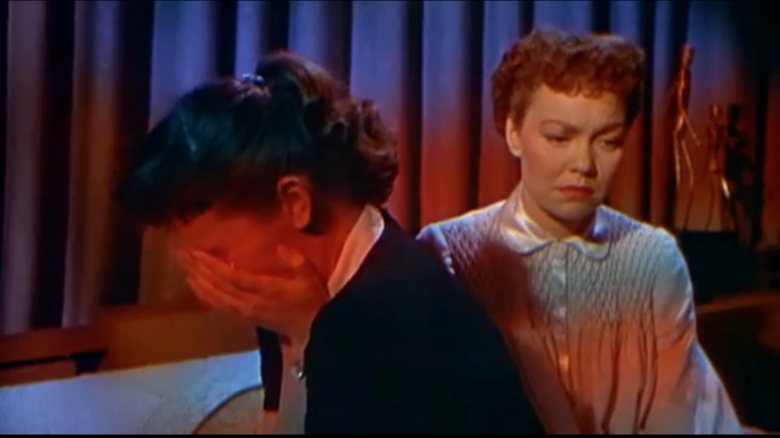
The stuff of melodrama is built upon the history of American theatre, which, today, implies Hollywood cinema: family and romance, breakups and betrayal, violence and horror. Lorde’s Melodrama might be a bit of everything above, thrown into the manic temporality of a house party. As she said to the New York Times: “With a party, there’s that moment where a great song comes on and you’re ecstatic […] and then there’s that moment later on where you’re alone in the bathroom, looking in the mirror, you don’t think you look good, and you start feeling horrible.” Parties are a capacious genre as well.
When I think of Melodrama, I don’t think Taylor Swift’s 1989 (2014) or Carly Rae Jepsen’s E•MO•TION (2015) — both arguably breakup albums of a sort — so much as Harmony Korine’s Spring Breakers (2013). Lorde’s and Korine’s narratives chime together; the euphoria of the party before the solo depression that follows. Even the acoustic renditions of Britney Spears’s “Everytime” that punctures Korine’s film like a kind of chorus are modeled in Melodrama’s reprises of “Sober” and “Liability.” It wasn’t until Lorde’s album that I had even considered Spring Breakers to be a melodrama. But the excess, the rapture, the female tears, the overlapping intimacies, the moral occult, even the threatening hierarchy of privilege. It’s all there.
They even share gestures — perhaps the crucial element of melodrama, per Brooks. The gesture of Melodrama is the sway, as it carefully shifts between highs and lows, the everyday and the excessive, love and violence. The uncertainty of what marks their difference is mirrored in “Liability,” where Lorde merges her lover with herself: “We slow dance in the living room, but all that a stranger would see / is one girl swaying alone, stroking her cheek.”
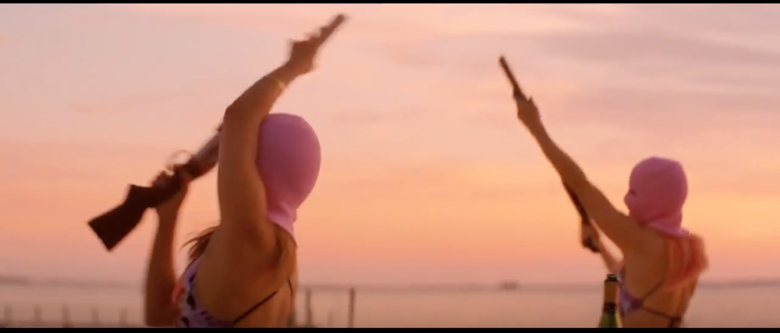
The most devastating moment in “Hard Feelings” occurs in its ambivalent final verse, when Lorde sings, “But I still remember everything, how we’d drift buying groceries, / how you’d dance for me,” where the strong break occurs after the grammatical break following “groceries,” but the actual lyrical dissonance occurs between “drift” and “dance for me.” Buying groceries punctuates the classically romantic, taking its place. Such melodramatic drift and displacement occurs throughout the album in prosaic places, from when “I stumbled on a secret power / I’ll find a way to be without you, babe” in “Writer in the Dark” to the piling cadences in “The Louvre” of “Nothing wrong with it / Supernatural / Just move in close to me, closer, you’ll feel it coasting.”
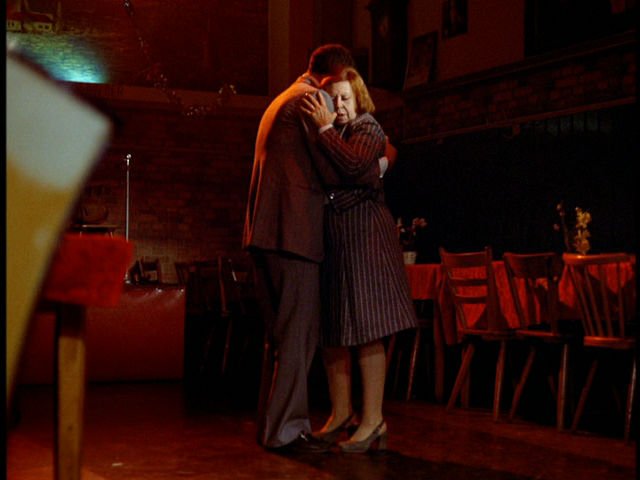
Like her Pure Heroine before it, the synesthete’s second album is self-consciously cinematic. The music has already been described in terms of its potential soundtrack functionality as well as its “passages of semi-incidental music,” but its filmic qualities don’t stop at the atmospheric. The very language of Melodrama comes from the movies. Even Lorde’s descriptions of songwriting appear as Platonic visual configurations: “From the moment I start something, I can see the finished song, even if it’s far-off and foggy […] It’s about getting the actual thing to sound like what I’ve been seeing.” The “actual things” on this album aspire to the mystically imagined, though their manifestations as individual jagged songs suggest that the “far-off and foggy” always remains somewhat so. Melodrama is always a little bit aspirational, if not outright impossible.
One term frequently used to describe Lorde’s music is “fluorescent” — a word that is featured in what is perhaps the most explicitly film-driven track, “Supercut.” Like “Royals” (her biggest hit to date) and its reference to “driving Cadillacs in our dreams,” “Supercut” is cinematic in its reliance on car culture. In the song, Lorde alternates between the driving beats of “In your car, the radio up” and the protracted release of “So I fall / into continents and cars.” All the while, the chorus (“But it’s just a supercut of us / Supercut of us”) toggles the song between the jolting rhythms of florescent supercut fantasies and the inevitable letdown of the falling. This frenzy reverberates in Lorde’s voice as well, which includes percussive effects such as the moan, the growl, and the whine in “Supercut.”
In other songs, her delivery could be described as drunker, or close to crying. The faux brattiness of Pure Heroine has evolved into the vigilant enunciations in Melodrama. She syncopates “I overthink your / p-punctuation use / Not my fault / just a thing / that my mind do” in “The Louvre” — drawing out “overthink” while popping her p’s with the attentiveness of a lover. Always, however, in her voice there sounds adoration. Lorde has described her relationship to pop music as one of reverence, and Melodrama is as much a love letter to that genre as it is to an ex-lover. In interviews, she’s cited Phil Collins, Don Henley, Paul Simon, David Bowie, Kate Bush, Joni Mitchell, and Robyn. It’s a formidable list and, despite the singularity of each artist, their influences can be individually traced in Melodrama. From the Bush-inspired punchiness in Lorde’s climactic notes to Henley’s syncopated punctuation in “Hard Feelings,” which, after the “slash” that transitions into the second half, introduces “Loveless” with a Collins drum sample. I would add Annie Lennox to the mix — the way she stretches a phrase, the way her verses wane.
Melodrama ends, perhaps appropriately, with utopia. And if it sounds anything like “Perfect Places” — the album’s final track and third single — then heaven is hip-hop beats with ’80s pop ballad vocals and a lot of piano.
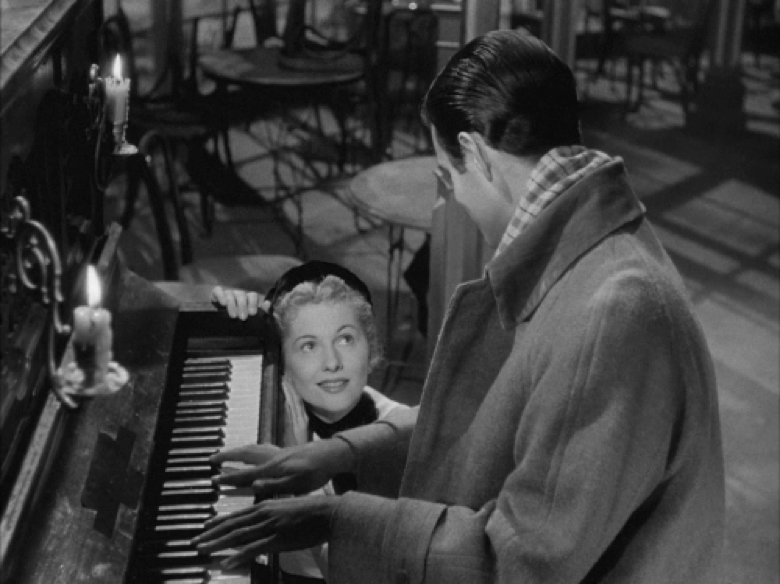
Narrative is crucial to melodrama — Carl Wilson writes, “Melodrama contains a lot more life experience and more craft, with songs that teem with dramatic scenarios and storytelling.” Like Wilson, I think it’s probably going to be the best pop album of the year. I think it’s perfect. But what does Melodrama finally dramatize? The house party, the decades-long history of Anglophone pop music, the aftermath of getting your heart broken for the first time, the struggle between good and evil followed by the revelation of a moral truth?
Part of its transcendence lies in its impossibility; I’m not sure what story it tells exactly. The structure of Melodrama is so conspicuous, yet I have to switch continuously between “Sober” and “Sober II (Melodrama),” or “Liability” and “Liability (Reprise),” just to remind myself that these tracks have anything to do with one another. The latter are ghostly reenactments of the former that end up taking us somewhere else entirely. It’s carefully plotted surprise, and it gets you every time. The moral occult here is both palpable and unidentifiable, and never straightforward. Melodrama rarely is.
Jane Hu is a writer and grad student living in Oakland.
Thou Shalt Enjoy This Homoerotic German Heinz Ketchup Ad From 1993
Deutschland (and truth in advertising) über us.


When the real news out of Germany mirrors the real news out of America (i.e., constant and bad), fear not, because you can count on BILD, the Fatherland’s most-read publication — indeed, the most-read non-Asian-language newspaper on the entirety of the Earth — to balance out its crass sensationalism with very cutting-edge cultural commentary. Whether it’s the itemized rules for taking a bath or the topless creep shots, BILD always prints things that human beings should look at and read.
Take, for instance, this list of “11 Advertised Claims We Always Fall For,” in which BILD takes the extreme and controversial position that the things printed on grocery packaging are misleading. Wait, wie bitte?

This revelation comes on the heels of a lawsuit brought to the European Court of Justice (basically the EU Supreme Court), where makers of sugar wafers Dextro Energy sued for the right to claim on the package that “glucose supports normal physical activity,” and lost. The EU had previously banned that claim, says BILD, explaining that it would “confuse consumers.”
SOME PEOPLE think a BANANA is good for your blood sugar, you see. But HOW DOES IT GET THERE, wonders Guy In White Coat? He prefers Dextro Energy, which goes einfach schneller im Kopf (AYN-fock SHNELL-ur imm KOPF), or “simply faster into your head.” Clearly.
How can any reasonable consumer be enough of a dipshit to think that what is basically a gross-ass proto-candy byproduct can turn a lethargic dud-body into a pert, task-dominating machine? How indeed. All I know is that once, when this particular dipshit lived in Berlin to attend language school, she carried a weird cuboid packet of Dextro wafers in her bag at all times and popped them at regular intervals, ostensibly to ward off the bizarre bouts of stress-fainting she was experiencing at the time due to her ill-advised decision to pursue a doctorate, but really because hey, even terrible candy is candy.
And the whole time, I (I mean “she”) was all like, Oh, if the Germans claim this stuff can ward off a blood-sugar crash and keep me alive through my four-hour adjective declension marathons, then it must be true. Because, my dipshit inner monologue reasoned, IF A GERMAN PACKAGE says it, I’m sure it’s gone through all sorts of regulations that we don’t have in America, where cigarettes are basically one tireless regulator away from getting to claim they cure sore throats again.
But it turns out that even German advertisements lie. Just because Germans never lose anything, and are rarely late, and don’t believe in sarcasm (because in order to say something sarcastically you have to exaggerate, and in order to exaggerate you have to say something that isn’t categorically true, and then they get caught up in how eksually zet’s not right and by the time you explain that you were attempting to make a funny and don’t yourself actually believe that every American owns twenty guns the moment is gone and you’ll be forever remembered as the Inaccurate Gun Statistics Recounter), doesn’t mean those Bio-Gummibärchen are nutritious.

For those of us who live and die by the unassailability of German groceries, this is a dispiriting revelation. Does this mean that Aldi does not actually welcome me heartily to their aggressively lit aisles? Is Pick-Up not actually Der Picknicker? Is nothing truly supergeil??????????????
According to this BILD exposé, products “without added sugar” are pre-packaged diabetic comas; anything “light” contains at least 500 calories per serving; ostensible veal products contain way too much grown-up cow; shrimp salad’s got alcohol in it; nothing is really “organic;” and — perhaps worst of all — if a package claims something is “just like your grandma made it,” it is NOT just like ANYONE’S grandma made it because nobody’s grandma stabilized her doughs with carrageenan.

Perhaps my hyperbolic American cynicism is colored by the minor thingy when one of the world’s biggest auto manufacturers claimed their diesel engines were super-cool for the environment and that was definitely not chill.
But ekshually, my distrust of German advertisements (or Werbungen, VARE-boong-un) dates back to the first time I ever watched one, during the summer of 1995, when this non-subtitled, German-made, English-language Heinz Ketchup advertisement was omnipresent on German music channel VIVA, sandwiched fifty times a day between Scatman John and Die Doofen.
If YouTube headings are to be believed (and, unlike grocery health claims, they always are), this ad actually dates back to 1993, and I have a lot of questions about it.
First, the homoeroticism, which I strongly believe — given the Germans’ aforementioned distaste for sarcasm and exaggeration — is meant to be played straight (AS IT WERE). Is this simply a reaction that any normal outside observer might have upon observing American Football for the first time, like, Oh, this is clearly a very homoerotic sport, and all of these guys are clearly thereby comfortable with playing with their sexuality? Like, did the makers of this commercial simply assume that, because American Football consists in large part of grown men jumping on top of each other, that its players would clearly engage in sexually charged homosocial banter off the field?
If you knew nothing of the real state of American homophobia circa DADT’s debut — and Schuman was but a scraggly high-school junior in 1993, and I can tell you firsthand, as the classroom’s requisite unapologetic gay uncle-haver, that it was awful—and just parachuted down from some Luftbrücke just to watch, like, four minutes of the Super Bowl and then left again, there would be no reason to think players didn’t striptease diner waiters on the regelmäßig.
But even aside from the homoeroticism, this ad is a treasure trove of interesting claims about what a normal night in an American eatery with the Most Popular Ketchup in America (for Which One Would Give The Shirt Off His Back) entails: American NFL players go out for diner steak after games in their soiled uniforms! They all weigh 115 pounds! They have no money so they have to barter their dirty drawers for food! The only thing even sort of true about the ad is the 14-year-old quarterback’s desire to put an entire bottle of Heinz Ketchup on his overcooked steak, and even that truth took two and a half decades to come to fruition in the worst possible way.
Granted, I’d forgotten all about that Heinz ad until about a week ago — but still, somewhere buried in this decrepit brain, I knew that German ads, though they are spectacular (and sometimes contain nudity), are, alas, still lying. And I surely knew this, then, in the summer of 2005, as I pounded those Dextro tablets on my way to German as a Foreign Language school. One night during that trip, I was leaving a giant Kaisers grocery store near the Warschauer Straße U-Bahn station with a bulging tote full of peanut-butter puffs and Dextro tablets, a perturbed-looking gentleman with red eyes and chapped lips came up and asked me for some change.
I told him I didn’t have any money, which was ostensibly true, since I’d purchased my groceries with a card and wasn’t carrying cash. Instead of wandering off, he walked alongside me and his voice grew louder: “Du sagst, du hast kein Geld,” he said (you say you don’t have any money), and then continued in German (but I’ll translate it for you because I don’t have all day), “but you’re carrying a full bag of groceries. Haven’t you read the Bible?” he asked.
“Don’t you remember where it says,” and here his voice shot up to a yell so loud that you could probably hear it from the top of the Alexanderplatz TV Tower: “DU SOLLST! NICHT! LÜGEN?” (Technically, the German for the Eighth Commandment is Du sollst nicht falsch Zeugnis reden wider deinen Nächsten, but is it ever a good idea to argue with a righteous junkie?)

At that moment, the light at the crosswalk turned green, and I darted away without saying anything. That was twelve years ago. I hope that guy is still alive, and that he’s clean, housed, and can purchase his own groceries at Kaisers — but God help him when he discovers the truth about the lies on their packages.
New York City, June 19, 2017

★★★★ A thin puddle lay right inside the door of the 1 train, from the air conditioner drip. A building and a cloud had kept the sun off the edge of the schoolyard during the morning wait, but now nothing was stopping it. The light felt as if it were stretching out the skin when it hit. The sunny side of the street was only a last resort. Somehow a passerby was wearing a full suit, a blue that was headed toward royal, throwing back some of the glow. New asphalt squished underfoot. A little cloud was rounded on one side and trailed tendrils from the other, like a drifting jellyfish. In a matter of minutes, dark clouds in the far west became layers of darkness in the near west became darkness spreading overhead. Interior lights brightened to an evening coziness by contrast, and then the sidewalks were wet and umbrellas were out. Thunder sounded and kept sounding, in one improbably drawn-out boom and then, after a pause, another. Briefly things brightened and then the thunder came again. Shredded garbage flew up and down outside the third-floor window. The rain came in thick billows, with big shimmering silver drops moving retrograde to the main gusts. For some reason the people out in it still held onto their umbrellas, even as the drenching water came at them sideways. This new cloudburst subsided exactly when it needed to for the walk to the homeward train. It was raining along the way but not enough to even react to. It was raining harder inside the station, where the earlier excess still flowed down through the ceiling. Up in the apartment and clear of it all, the plain gloomy oncoming evening suddenly flared yellow, a huge shapeless light pushing through the blinds and glittering furiously in the fat drops still on the window. “OK, that’s legitimately scary,” the ten-year-old said. “It looks like it’s totally going to burn my hand off,” the five-year-old said. Down low under the wash of light, over New Jersey, a lumpy line of clouds stood brownish and grayish pink. Nearer were first silvery shreds and then dark ones. The doorbell rang. Amid delays and confusion in Newark, the plane to Mexico City had somehow left with an empty seat. There would be another one in the morning.
kodomo, "HEL"
The day goes on and on.

Good morning. It is the longest day of the year, which — given how long all the days are now — seems more like a punishment than anything else. How long will this day last? No one knows. Maybe it will go on forever, and you will be destined to roam the earth begging for the sweet release of sunset. Maybe you will still be staring into the sky years from now, wondering why you haven’t died. Maybe we will all be waiting for the world to end together as we sit stunned and immobilized by a day that doesn’t quit. I don’t know, it’s confusing these days. Anyway, here’s some music. Enjoy.
Free Ashanti (And Everyone Else)
Guatemala Diaries, Part VI

M. and Alexis were taking three boats and a bus back to Guatemala City. One of the boat routes, from Punta Gorda, Belize, to Puerto Barrios, Guatemala, was attacked in 2000, and several people were brutally murdered. I am a big chicken, but not so big I actually saw that situation duplicating itself. But even so, the trip seemed long and punishing. After much wringing of hands, I bought a plane ticket from Belize City to Guatemala City. It was expensive but a relief to just make the purchase. Seconds later, I got an email informing me that I had just gotten paid for something that I totally forgot about, so it was like the ticket was free anyway.

A few hours after buying the ticket I lost my cash card in the ocean. I had tucked it into my bikini top and put on a dress with a built-in bra, and it seemed fine, but then I was walking along the beach to dinner, and was like “Jesus Christ why am I wearing 1000 bras?” and took the bikini top off without thinking. I’d like to point out here that I carry stuff in my bra a lot and have never had anything even vaguely resembling a problem. Also, my cash card will not be lonely as there is a lot of garbage in the Caribbean. If you see a clean beach in the Caribbean, it is because someone has cleaned it for you.
In addition to having no cash card I also had no phone as my brand new iPhone stopped taking a charge for no reason. The bad news is that without a phone or a cash card I don’t feel like a real person. The good news is I am going to replace both of them soon and be made whole, like this woman at the Museo Nacional de Arqueología y Etnología with her complete matching necklace and earring set:

More good news: not having a phone forced me, during a four and a half hour bus ride from Placencia to the airport in Belize City, to become intimately acquainted with the song “All Tied Up,” by Casey Veggies, Ft. DeJ Loaf. This happened because iTunes, as it does, had un-downloaded all my music. I only had three songs to listen to — “All Tied Up,” Robyn’s “Indestructible,” and Ashley Monroe’s “Like a Rose.” Why these songs? I have no idea. Ask the bag of dicks previously known as iTunes.
I could only listen to “Indestructible” once because I have heard it so many times. I have listened to “Like a Rose” a lot too, but probably not as much. In this song, a woman who had a terrible childhood and life reflects on how she turned out well anyway — how she “came out like a rose.” Listen to this song. Here’s a very simple and accurate test you can take while listening: If it doesn’t remind you of yourself in some small way, you have no soul.
I downloaded “All Tied Up” right after it was featured on an episode of “Girls” and listened to it a few times but never really gave it its due. The song starts out with DeJ Loaf singing over a floaty, dreamy sound that slowly works its way to becoming music: “I’ll be a lady in the streets in a dress with her hair tied up/Or I can be a freak in the sheets in the room with her hands tied up/It’s whatever you want/whatever you like/It’s not a problem at all.” That last line really makes it for me, how it’s like she’s telling him she’s going to bring him a cup of coffee, just casually informing him she is good at lots of different stuff. Then Casey Veggies (of the world’s stupidest name) comes in with a pretty good verse and then DeJ Loaf, thrillingly, is back again with her same part. She’s way better than he is but he’s not ruining it — it’s no Ja Rule/Ashanti emergency. (When they were popular, my friend and I kept saying we were going to make “Free Ashanti” T-shirts.)
It’s one of those songs where he likes the girl because she’s smart and pretty and faithful, fine/yawn:
Fly face, nice body, and swag crazy
She work and she goin’ to school, she ain’t lazy
And when she out and about, she look wavy
And when they try to ask what’s up, she say Casey.
Anyway, Casey Veggies is doing Ok until he’s not. At around 2:15, the sexily accommodating DeJ Loaf is repeating “whatever you like, whatever you like, whatever you like,” and he stumbles in, muttering spastically: “She’s gonna do whatever I like/ She’s gonna do whatever I like/ She’s gonna do whatever I like.” He just sounds so pre-butthurt, like he knows deep down she’s only saying all that stuff because she has to and she’s already called a Lyft.
If this song were focus grouped my hand would shoot up and I would shout “I didn’t believe the part where she said she’s going to do whatever he likes. And then, when she said “it’s not a problem at all” I thought that was definitely going to turn into something, because it seems like it would definitely be a problem? And then when nothing happened with that, like, it confused me?”
Oh well. The DeJ Loaf part is perfect, made more so by having to wade through Casey Veggies to get to it.
The bus was an inferno. I kept trying to remind myself that this was how most people in the world traveled blah blah blah but it was not helpful. I couldn’t get away from the sun. Someone was wearing a lot of Shalimar. A kid was kicking my seat, although, completely anecdotally, I have to say that children in the Caribbean cry and complain less in public than American children. Just an observation, possibly wrong.
I put a straw hat I had just bought on the seat next to me and it blew off, tumbled down the aisle and out the bus’s open door.
In Belize City, I got a taxi. My taxi driver was maybe 40, black, very big, maybe 6’3 and maybe 225 pounds, but not really fat. He and I had an instant emotional connection and fell quickly into a deep conversation. As soon as I said I was American he asked me how Donald Trump got to be president if so many people hate him and I explained the electoral college. At first he seemed to be concentrating, then he looked perplexed, by the end, he was full-on wincing. He asked me if a lot of people in the United States hated black people. I said yes. He asked me if I hated black people. I said no. He asked me if I thought I was prejudiced. I said I thought everyone had prejudiced feelings at times but I would not characterize myself as being ideologically prejudiced. I added, “Like when people say “I don’t see color,” I feel like that’s weird, even if it’s supposed to be ‘nice.’”
He nodded and said he understood.
I asked him if he’d ever been to Guatemala and he said he’d never been out of Belize. “I grew up real hard,” he said. We were at a light and he looked straight at me and didn’t look away. “I have had to hustle my whole life.” He was direct in a way that has become unusual and this moved me. He kept talking. “I didn’t have no father, my mother died, and I just lived with my aunt, and she didn’t really have no place for me, and I just worked.”
I asked what he did, and said, “Whatever. I did whatever.” He nodded and said again: “I grew up very, very hard. But I am a hustler.” He looked at me again and nodded slowly. “And I got a house now. I don’t have everything perfect but I am good, and I am a good person, try to always be calm, no matter what.”
My taxi driver would pass the “Like a Rose” test.
I flew to Flores, Guatemala in a tiny plane with an archaeologist who seemed like she’d never been in a bad mood in her life. I seriously bet she wakes up every morning, plants her feet in a sunny spot on her clean floor, stretches her arms over head and says, “I can’t wait to archaeology today!” Then her dog jumps into her lap and licks her face, then they go for a jog, then it sits at her feet as she reads the comics to it aloud. We flew from Flores to Guatemala City in a larger plane and sat together. She told me about how “the Mayans” were not just one uniform group, and that they were always killing each other. I kind of figured but it was good to hear it from someone who didn’t always expect the worst of everyone.
My friends Sam and Daisy were in Guatemala, part of the reason I’d wanted to hustle back. Daisy took us to a fancy place for dinner and told me I could pick out whatever wine I wanted. I picked out a pretty pricey bottle from Portugal because Daisy always means what she says. I was going to save the cork but I forgot. We had expensive ham. I slept in their room on a cot. M. and Alexis showed up at 2 a.m. and got another room. In the morning we all went to the Museo Arqueología y Etnología. We took a dangerous but fun cab ride.
We tried to find this one museum about the Guatemalan genocide and it seemed like there were several. Sam made fun of me for wanting to go to it because his mom and her boyfriend, who were also in town, kept asking all these Guatemalans about the war and they obviously did not want to discuss it. I said just because they were pests didn’t mean I couldn’t be interested. He said he agreed. We still couldn’t find this museum and then it poured and we took cover in a touristy restuarant where a marimba band was playing. After some time on the restaurant Wifi we were able to orient ourselves and headed out again. I was incredibly struck by the beauty of a little urban park everyone else found unspectacular.

The Casa de La Memoria was more like a conceptual art piece than a traditional museum. It started with the arrival of the Spanish and went up through today and wasn’t attempting to communicate everything that’s happened in Guatemala so much as help you begin to wrap your mind around the scope of cruelty and death.

From there we went to a game-themed café — hilarious that this place existed and we happened to find it since we are all to some extent game nerds — and played a game called Secret Agent, followed by a game called Stage 2 Trivia that was 30 years old and had never been opened. The music was all 90s. I got annoyed with Sam because he likes the Cranberries song “Zombie” and he got mad at me because I like the Verve song “Bittersweet Symphony.” We called what we thought was a van taxi and were sent instead a tiny one which we piled into laughing very hard. We slept. Max, Daisy, and Alexis went to Lake Atitlán.
For 24 hours, M. and I did almost nothing. We bought some gifts. He watched T.V. I read Wikipedia articles about Guatemala. I read about José Efraín Ríos Montt, Guatemala’s president from 1982 to 1983. In December, 1982, Ronald Reagan visited Guatemala and said, “President Ríos Montt is a man of great personal integrity and commitment. I know he wants to improve the quality of life for all Guatemalans and to promote social justice.” That same day, the Dos Erres massacre took place, resulting in the deaths of over 200 people. Ríos Montt, who is 93 and already in jail for other war crimes, will face another trial for the Dos Erres massacre later this year. On our last morning I went to an art museum and was the only person there, which was both sad and luxurious.
At the airport, I watched the “All Tied Up” video. Casey V. is better in person. I literally can’t think of anything stupider than that name. Who came up with it? What is wrong with them? I see he has a management company called Peas and Carats. Why not Casey Carats? Casey Carats is good! Casey Carats, can you hear me?
Is She Putting You In The End Zone Or The James Patterzone?
Welcome to the World of Swaggy Golf Instagram
How Golf Found A Place On Instagram
Trick-shot redemption.


Technically perfect golf is, by design, boring. You hit the ball as straight as you can onto the shortest grass you can find, until you get the ball into the hole, where there is no grass, in the fewest number of strokes you can manage. Do this eighteen times in a row, and voila, you’ve just played a great round and also made everyone watching you pay attention to something else. Though physical stamina and technical ability are both necessary for playing competently, being a good golfer is more about achieving a zen-like state in which the mind is clear from doubt or even expectation, so that muscle memory can kick in and do the rest.
Hitting a tee shot 275 yards or imparting backspin with a seven-iron is a bit like flying in the Hitchhiker’s Guide to the Galaxy books: the only way to do the thing is to very intently concentrate on absolutely not thinking about the thing. Focus on outcome rather than process, and you’ll end up flying the green, hooking your ball into the water, or doing that super embarrassing thing where you take this big-ass swing then only hit the top of the ball so that it dribbles 50 yards and makes you want to shrink into nothingness and then die. The only way to avoid this stuff is to remember that what you’re doing is, fundamentally, not about other people. It’s about quieting the noise in your head and getting out of your own way.
Contrast this with Instagram, a service where strangers give validation to people who dedicate their accounts to doing the absolute most all the time. Philosophically, golf should not work here. But tons of people love golf, and lots of those people want to engage with golf stuff on Instagram, so you bet your ass somebody was going to figure out a way to make golf work on Instagram, and at some point, perhaps inevitably, it was going to involve a speedboat. Consider this video, which finds a guy standing on said speedboat, using a wedge to juggle a golf ball like Tiger Woods in that one Nike commercial, catching it on the top of his club, and casually flicking it off the back of the boat to another guy who’s surfing in its wake, who then hits the moving ball with a driver.
The “star” of the video is @coach_rusty, a self-described “golf trickshot artist” who lives in northern Virginia and does not give one iota of a fuck. He will sink a putt using a moving fidget spinner as a putterhead. He will juggle a golf ball while standing 30 feet in the air on a tree branch, then lazily send it bouncing off the top of a golf cart down to his bro so he can hit it while it’s still in motion. He will hit a ball, then hit another ball that hits the first ball. He will use a golf club to hit a soccer ball into the crossbar of a soccer goal. He will use a golf ball to set off a Rube Goldberg-esque contraption that ends with a Hot Wheels car knocking a golf ball onto a block of wood, and then hit it off the bounce with his driver. He will do this, which is way too complicated for me to explain.
Coach Rusty is part of a larger network of swaggy instagram golf trick shot artists that includes Steel Lafferty, a professional wakeboarder/amateur golfer you might recall from that speedboat video; Joshua Kelly aka @holein1trickshots, whose bro-y golf posts incorporate guns, hoverboards, and beer pong; and @coach_rusty’s girlfriend, with whom he celebrated Valentine’s day by doing trick shots at the driving range.
Because golf is inherently sort of boring, Coach Rusty and his compatriots tends to spice things up by slowing footage of himself down and setting to the type of EDM trap that sounds like the producer sampled a tennis ball shooter. Often, when he completes one of his trick shots, he celebrates with the gusto of a person who has just base-jumped from the moon to the earth, or at the very least won an actual golf tournament.
In professional golf, meanwhile, great shots tend to follow monumental fuckups, and part of what makes them so jaw-dropping is that the sense of redemption — not only did Bob Golfman regain his resolve, but he overcame the type of pressure that comes with having to correct a very public and high-stakes error. Take the two most impressive golf shots I can think of: Tiger Woods’ chip-in at the 2005 Masters, and Bubba Watson hooking a gap wedge 150 yards out of the woods and onto the green at the 2012 Masters. Prior to both of these shots, Tiger and Bubba had made mistakes — Tiger’s tee shot had missed the green and had ended up wedged between the green and the fringe, while Bubba had sliced his drive into some trees and now had to hit his approach off a bunch of sticks and leaves and stuff. Tiger somehow managed to will his ball onto the exact trajectory he needed to sink a birdie; Bubba literally managed to defy physics and land within 15 feet of the pin to save par.
Chip-ins and successful recovery shots are things a player like me might make by accident, unlikely highlights in a round full of similar mistakes and lots of unsuccessful attempts at saving par. These guys, meanwhile, each made their shots on the last day of the Masters and each won the tournament — in other words, part of what made them so amazing is that they were in the greater context of a round characterized by the unflashy consistency that defines great golf.
In his own way, Coach Rusty too is a professional golfer, at least in the sense that he gets paid to do golf stuff. His videos and photos often incorporate branded sponsorships, and he has posted content on behalf of Honda, DraftKings, Swannies Apparel, Callaway golf clubs, Gios headcovers, and Birds of Condor golf hats, which he calls “swaggiest in the game.” He and Kelly, a frequent collaborator, are repped by the Golf Stars Agency, whose site boasts that the company aids “the world’s top golf social media influencers in partnering with endemic and non-endemic sponsors who want to re-imagine the way consumers connect with their brands.” It’s almost as if the community’s aesthetic, so reliant on trap music and elaborate staging to create isolated moments of incredulity that are only tangential to golf as we know it, has been tailored to fit in with the greater Instagram economy.
Sometimes, I worry about Coach Rusty. He’s obviously a pretty good golfer; otherwise, he wouldn’t be able to chip this miniature football into a hole on behalf of the NFL Network. But are his posts’ manic positivity, high production values, and seamless brand integration the mark that he’s secretly the golf version of those #vanlife people? Is he doomed to put in so much time and effort into creating content that appeases the companies who underwrite his swaggy golf lifestyle that he ends up spending less time on the course than if he had a real job and played golf on the weekends? Is Coach Rusty even allowed to play a round of golf without his GoPro strapped to his head?? My heart wants the answer to be yes, but the fact that he had to learn how to ride a balance board to make this clip that ends with him jumping into a pool while biting into a beer can strongly suggests that the answer is extremely not yes.
Perhaps the best representation of actual golfing on Swaggy Golf Instagram is @md_18undapar, a 13 year-old junior golfer named Matty Du Plessis whose innate charisma makes Coach Rusty’s excesses seem even more ridiculous. Unlike Coach Rusty and his cohort, most of his clips consist of him just hitting shots on the course, sometimes set to the sort of rap music that 13-year-olds like, sometimes not.
For the most part, his videos aren’t all that impressive unless you’re, like, actually into golf, and even then, most of their joy comes as a result of Du Plessis’s enthusiasm for working hard, getting better, and showcasing his progress along the way. Though he does occasionally post novelty videos — including the occasional trick shot — they rarely seem designed to plug his sponsors. He’s cooked eggs using his expensive Bridgestone wedges as kitchen utensils, and remade the Notorious B.I.G.’s “Juicy” to be all about golf.
Lately, he’s been accepting “challenges” from his fans (he calls his fans “Barahs,” which I don’t really understand, but then again I’m not 13) to do stuff like make a par using only a specific club. When he accepted a “challenge” to hit his driver 200 yards with the headcover still on it and couldn’t make it happen, he posted the video of himself trying and failing. Simply by being himself, Du Plessis makes the greater tenets of golf — humility, mental acuity, acceptance — seem like swaggy qualities to possess.
My favorite of Du Plessis’s recent posts finds him hitting off barren ground, trees blocking his ball’s path to the green. Much like Bubba Watson at the 2012 Masters, he’s wound up in the woods and now needs to recover. Calmly, he squares up to the ball, wiggles his club a couple times, and proceeds to hit a low, straight shot heading straight towards the pin. He watches the ball fly for a moment, then, satisfied, turns around and pats his chest for the camera. In the caption, he lets his fans know he ended up getting a birdie on the hole. He shot four under par for the round.
Drew Millard is a freelance writer based in Durham, NC. Follow him on Twitter: @drewmillard
Everything I Know About Storytelling I Learned From The BBC's "Planet Earth II"
My guru, my iguana.
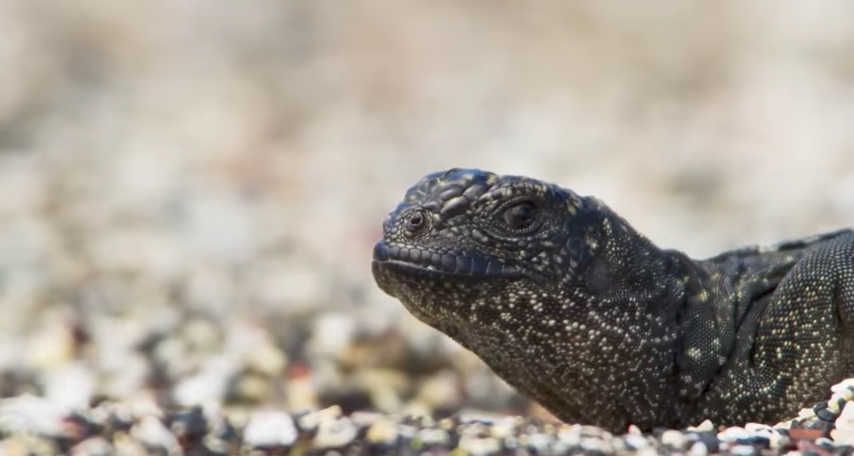
“The writer,” says Donald Barthleme, “is one who, embarking on a task, does not know what to do.” This sounds somehow both daunting and holy — as if writing is going to be all mystic attunement, unaccountable inspiration — but it turns out to be simply and depressingly true. Not knowing what to do on the page is no more pleasant, and no more spiritually charged, than not knowing what to do with an overflowing dishwasher. You feel inadequate and enraged and your knees hurt and you’re fairly sure that that plastic thing you just removed is now broken.
Which accounts, I think, for the entire sub-industry of books devoted to taking the mystery out of writing. It certainly accounts for those books’ presence on my shelf. Bird by Bird and Hero With a Thousand Faces and Save the Cat and Aspects of the Novel and self-published Kindle things whose titles I’m too embarrassed to type out. At the many points in the writing of a novel when I feel hopeless, I turn to these books as I turn, before weddings and funerals, to YouTube tutorials on how to tie a tie. Dear Non-Judgmental and Miraculously Competent Stranger: Please cure me of my idiocy.
But these books, good and sensible as many of them are, never quite do the trick. Their rules of story structure — and it is always story structure that I am convinced is the crux of the difficulty — are either too rigid or too academic, too low-brow or too lofty. Blake Snyder wants to know whether my story is more “Monster in the House” or “Dude with a Problem.” E.M. Forster, meanwhile, would like us to muse together on the distinctions between narrative pattern and narrative rhythm.
Which is why I am so excited to have finally discovered, well into my thirties, a group of story gurus whose wisdom meets me precisely where I am. At long last, some expertise that leaves me feeling neither grubby nor in need of a nap. Meet the hatchling iguana and the hellishly numerous racer snakes of Fernandina Island.
Is your heart not racing? Did you not, in those two minutes and sixteen seconds, feel every string of your emotional instrument expertly plucked? That single interaction between a gaggle of scaly creatures on the other side of the planet has taught me more about storytelling than entire years of expensive education.
For instance:
You need a sympathetic protagonist, and that doesn’t mean he needs to be cuddly.
I have seen iguanas. I have touched iguanas. I have, for reasons I can’t quite reconstruct, owned iguanas. I find them creepy and papery and fundamentally unlovable. But this iguana — he is, for the length of this video, as dear to me as my oldest friends. If you, as writer, can evoke a character’s plight with sufficient vividness — if you can, by careful trickery, wire a connection between the reader’s nervous system and your character’s — then you can write a compelling story about anyone, including someone who is literally cold-blooded.
Your protagonist needs to have a significant but theoretically solvable problem.
A snake is coming for our poor hero. But fear not, or fear only somewhat, because he has a plan. He’s going to stay absolutely still. And for a while, we think that his plan might — might — possibly work. At 1:01, though (the instant when this video goes from good to great) his plan fails, as all early-in-a-story plans must fail. Think of Roy Scheider trying to close the beach in Jaws, or Raskolnikov deciding to kill and rob the old lady in Crime and Punishment. And after this failure…
Your protagonist needs, now that his first plan is off the table, to act boldly.
Sweet Jesus, the desperation of that run. Did he even know, when he woke up that morning, that he was capable of running like that, front legs fully off the ground? Your hero, who to this point in his life has done well enough with the standard hammer, saw, and nails, now finds himself rummaging desperately in his characterological tool-kit. This is Dustin Hoffman in Tootsie deciding to go ahead and start a relationship with Terri Garr, or Macbeth realizing that he’s also going to have to kill King Duncan’s guards. Your character thinks he’s pushed himself to his absolute limits, except…
Even this bold plan has got to fail.
Has there ever, in cinema history, been a tenser or harder-to-bear scene than 1:22–1:33? This was when, on first viewing, I actually turned the video off, certain that I was about to witness an iguana explosion. Your poor hero, having acted boldly, now finds himself well and truly fucked, and if you do this part right the reader should find himself all but covering his eyes. This can’t be happening. This is Joy and Bing Bong stuck in the Memory Dump in Inside Out, or Romeo learning of what he thinks is Juliet’s death and deciding to take poison himself. This seems as if it has to be the end of the line, except…
Your protagonist must transform himself, and in so doing be extricated from his impossible predicament.
Each and every time I watch it, it comes as a heart-stopping surprise when the iguana squeezes his way out of that snake-crush. We still don’t know if he’s ultimately going to make it — that final scrabble up the rock-face with its astonishing snake-leap is still to come — but even if he does die, something has, by the fact of this escape, changed. The iguana, in facing the absolute blackest imaginable moment in iguana life and overcoming it, has been reborn: he is not the same character that he was when he decided that the best thing to do, if pursued by a snake, is to hold your breath. By the time he’s up there on the mountaintop, blinking beside his oblivious friend, he is Odysseus reunited with Penelope, he is Christ in Galilee. His story has arced.

Now all of this, as I’m sure the iguana and snakes would hasten to tell you, is subject to infinite variation and reinterpretation. Romeo and Juliet really do die, for instance, so it’s not so much they who are reborn as it is their families. And sometimes the problem your protagonist faces can be as subtle as a persistent feeling of ennui, and his plan can amount to not much more than a wintry walk through Central Park.
But this video, unlike nearly every other bit of writing instruction I’ve ever received, really does make me feel unaccountably inspired; it really does give me a sense of knowing, at least generally, what to do. So lately when I’m stuck, I find myself thinking less of Freitag’s pyramid or Robert McKee’s admonishments, and more of a certain barren beach in the Galapagos. Way down in our lizard brains — and right there in those lizards’ bodies — the principles of storytelling have been hiding all along.
Ben Dolnick is the author of The Ghost Notebooks, coming in 2018 from Penguin-Random House.

